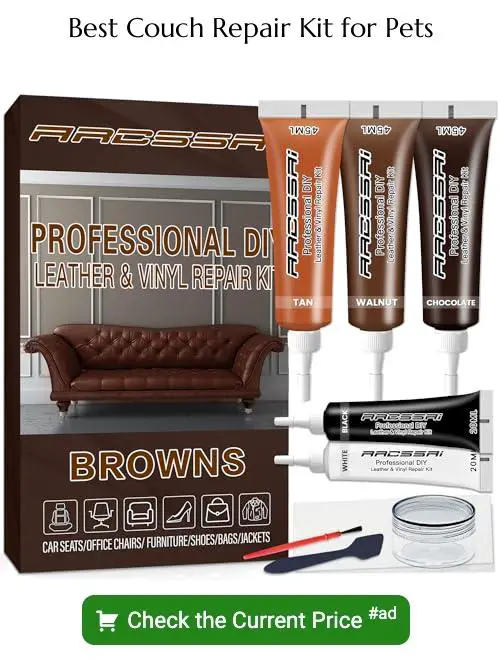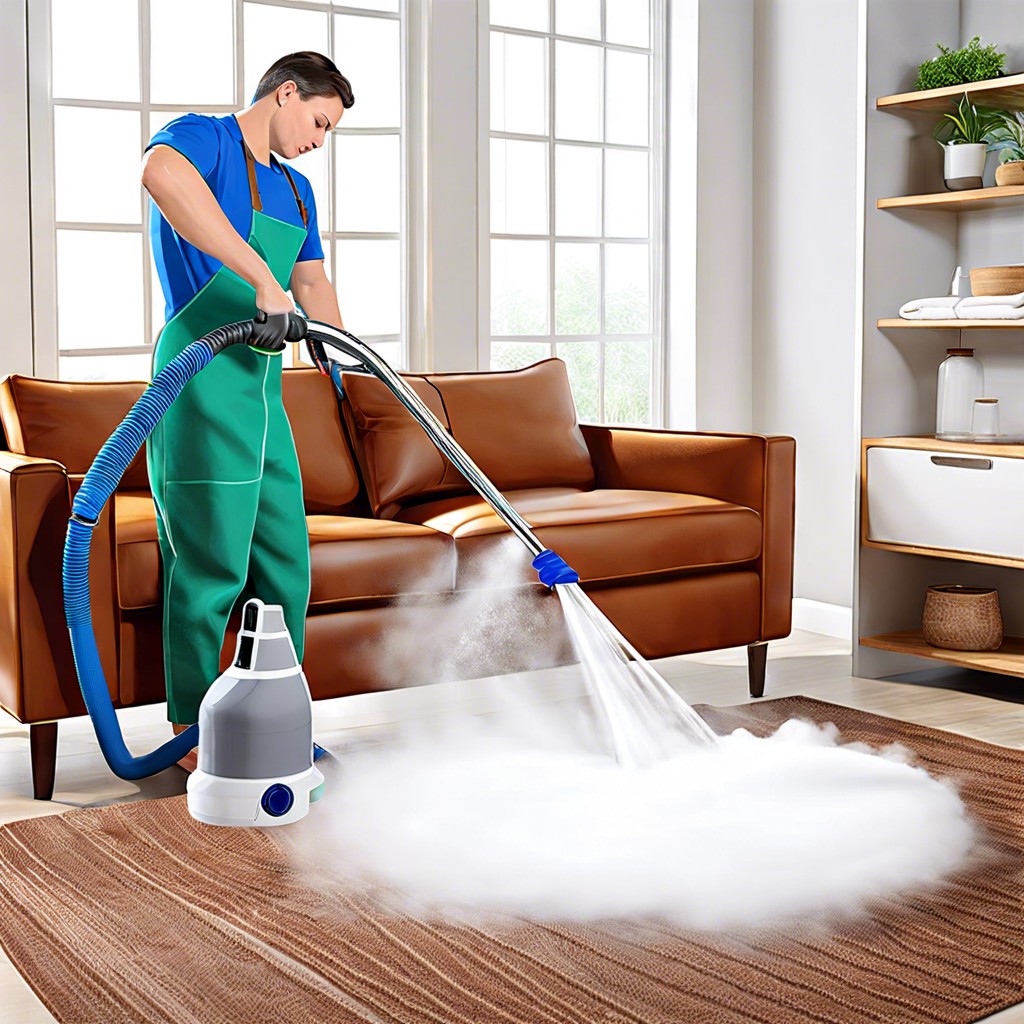Last updated on
Discover the most effective techniques to mend that pesky hole in your couch caused by your furry friend, restoring it to its former glory.
Your furry best friend is always there to greet you with a wagging tail and a slobbery kiss. But sometimes, their playful nature can lead to unexpected damage around the house – like a hole in your couch.
Whether it’s from an enthusiastic game of fetch gone wrong or simply a case of mistaken identity (sorry, Mr. Stuffing), holes in couches are an all-too-common problem for pet owners.
But fear not! With the right tools and techniques, you can fix that hole and have your couch looking as good as new in no time. In this article, we’ll walk you through everything you need to know about fixing a hole in your couch caused by your beloved pup.
So grab some treats for Fido and let’s get started!
Key takeaways:
- Assess the damage and trim frayed edges and loose threads.
- Identify the type of damage and the specific area affected.
- Gather the necessary materials, including fabric patches, scissors, and thread.
- Choose replacement fabric that matches the original material.
- Secure the patch with fabric glue or by sewing the edges.
Table of Contents
Assessing the Damage
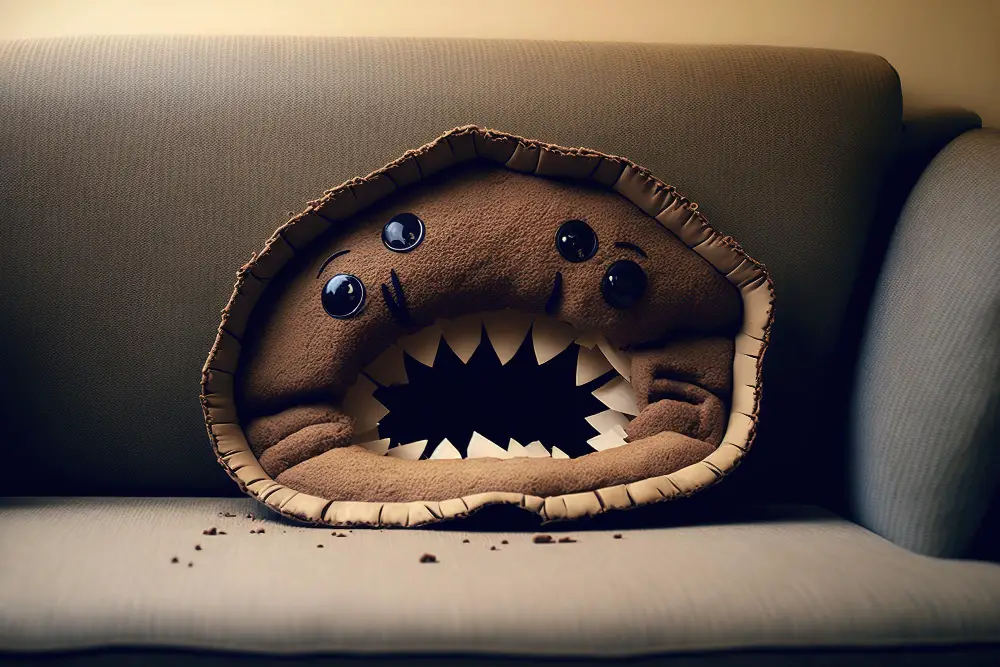
The first step in fixing a hole in your couch caused by your dog is to assess the damage. Depending on the size and location of the hole, you may need to take different approaches to repair it effectively.
Start by examining the area around and beneath the damaged spot for any additional damage or wear that may have been caused over time.
If there are loose threads or frayed edges around the hole, trim them carefully with scissors so that they don’t get caught during repairs. If there’s stuffing coming out of a cushion, remove it gently so you can see how much fabric needs repairing.
Once you’ve assessed all visible damage, measure both length and width of each tear using a tape measure; this will help determine how much replacement fabric is needed later on when cutting patches for repair purposes.
Identify the Damage

Depending on the size and location of the hole, you may need different materials or techniques to repair it properly. Start by examining the area around the hole for any loose threads or stuffing that may have come out of it.
If there are any loose threads, trim them with scissors so they don’t get caught during repairs.
Next, take note of where exactly on your couch that pesky pup has done their damage – is it on an armrest? A cushion? The backrest? This will help you determine what kind of fabric or material was used in that specific area and what type of patching technique would be most effective.
Once you’ve identified all areas affected by holes from Fido’s playful nature, make sure to mark them down so nothing gets missed during repairs later on.
Gather Required Materials
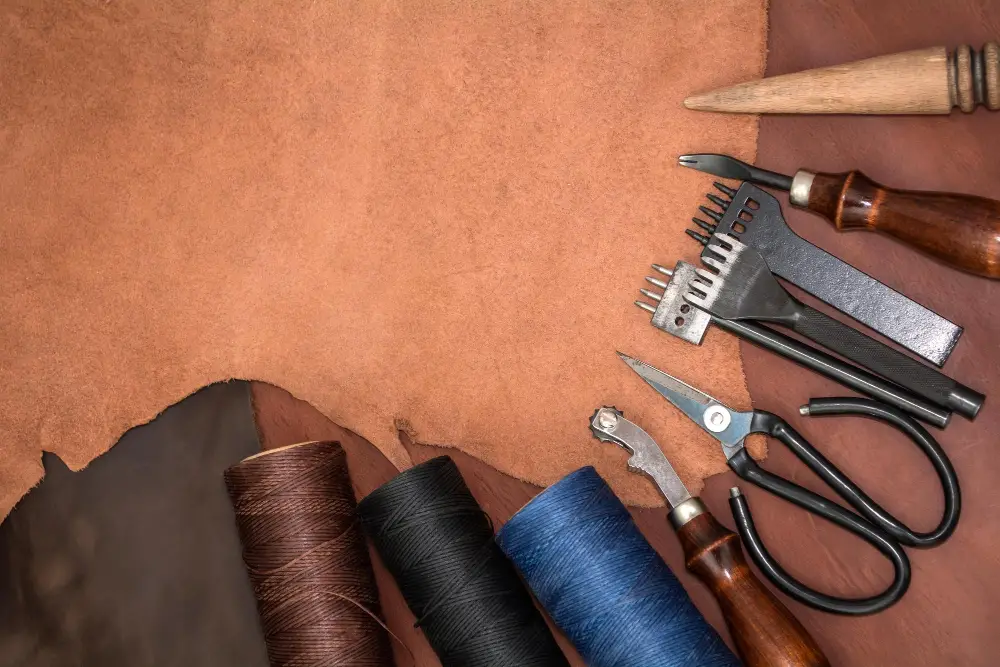
The good news is that most of these items can be found at your local craft or hardware store.
Firstly, you’ll need a pair of sharp scissors or a utility knife to cut away any damaged fabric. You’ll also need some replacement fabric that matches your couch – this can be purchased from an upholstery supply store or online.
Next, grab some heavy-duty thread and needles for sewing up any holes in the fabric. If you’re working with leather or vinyl upholstery instead of cloth material, make sure to purchase specialized repair kits designed specifically for those materials.
You may also want to have on hand some foam padding if there are areas where stuffing needs replacing as well as glue (fabric glue works best) if there are loose seams that require fixing.
Lastly, don’t forget about protective gear such as gloves and safety glasses when handling sharp tools like scissors and knives during repairs.
Gathering Necessary Supplies
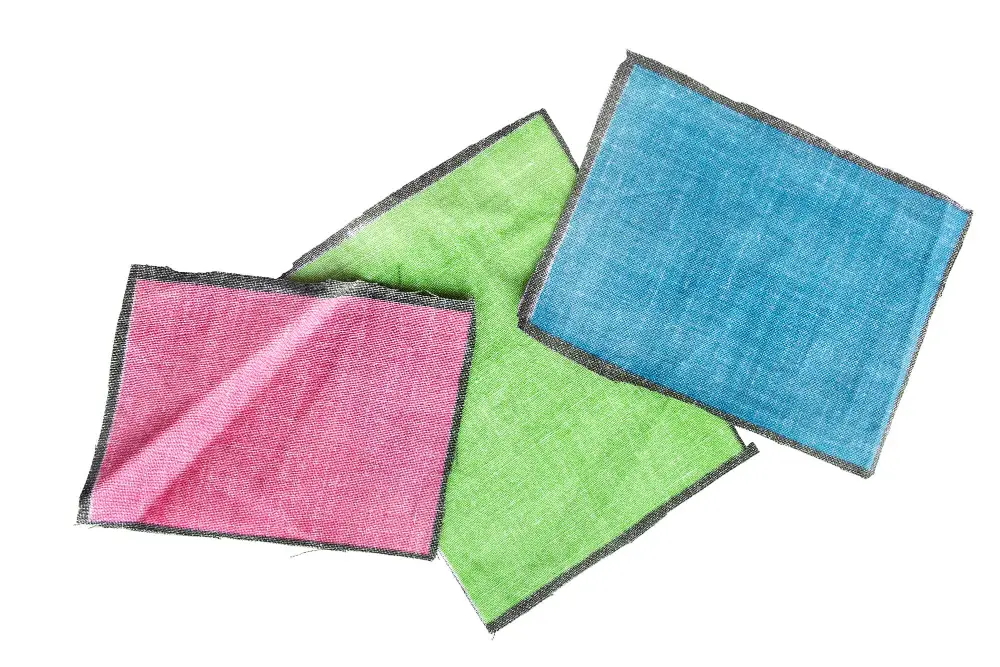
Depending on the size and location of the hole, you may need different materials. For small holes or tears in fabric upholstery, a simple patch kit may be sufficient.
However, larger holes or those located on leather or vinyl upholstery will require more specialized tools.
To get started with gathering your supplies, make sure that you have a clear idea of what type of material your couch is made from – this will determine which repair materials are appropriate for use. You’ll also want to ensure that you have enough replacement fabric (if needed) to cover any damaged areas.
Some common items that might be required include:
- Fabric patches
- Leather/vinyl repair kits
- Scissors
- Measuring tape/ruler
- Needle/thread/sewing machine (depending on skill level)
- Upholstery glue/adhesive
Choose the Right Fabric
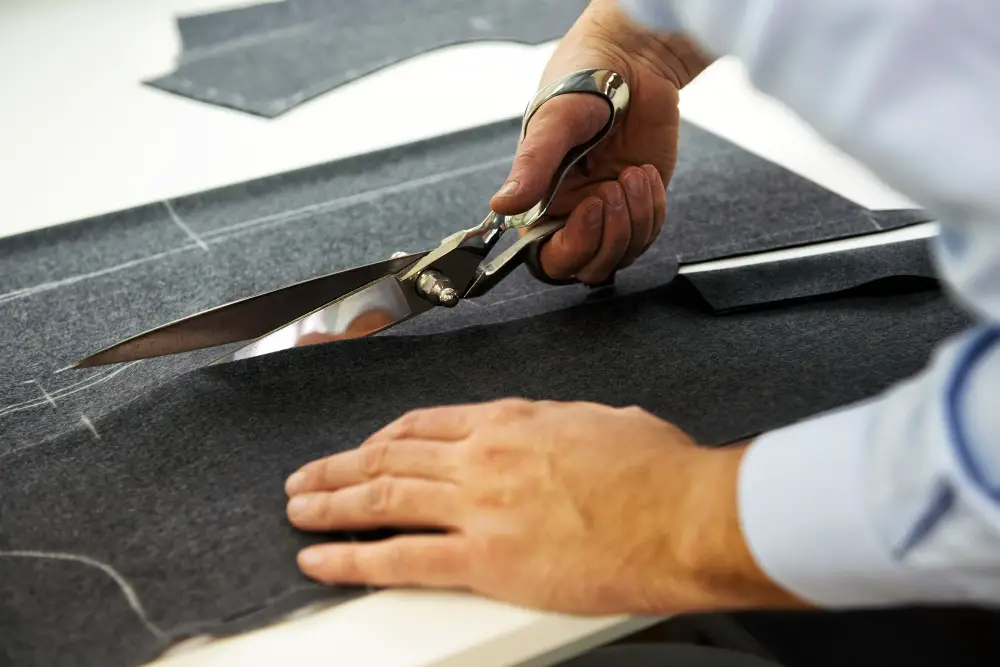
You want to make sure that the replacement fabric matches as closely as possible with the original material. This will ensure that once you’ve repaired your couch, it looks seamless and natural.
To choose the right fabric for your repair job, start by examining what type of material was used on your couch originally. If you’re not sure what kind of upholstery you have, check any tags or labels on the furniture itself or consult with a professional upholsterer.
Once you know what type of material was used on your couch initially, look for replacement fabrics that match its texture and color as closely as possible. Keep in mind factors such as durability and ease-of-cleaning when selecting new materials – especially if pets are involved!
Upholstery Material Considerations

Not all fabrics are created equal, and some may be more difficult to work with than others. Before you start any repairs, take a moment to consider the type of fabric your couch is made from.
If you’re not sure what kind of fabric you’re dealing with, check for tags or labels that indicate the material and cleaning instructions. Common upholstery materials include cotton, linen, wool blends and synthetic fibers like polyester or nylon.
Keep in mind that different fabrics require different repair techniques – for example; leather requires special adhesives while woven fabrics can be sewn together using thread and needle. Additionally certain types of materials may have specific care requirements such as dry-cleaning only which should also factor into your decision-making process when selecting replacement patches.
Remove Damaged Fabric
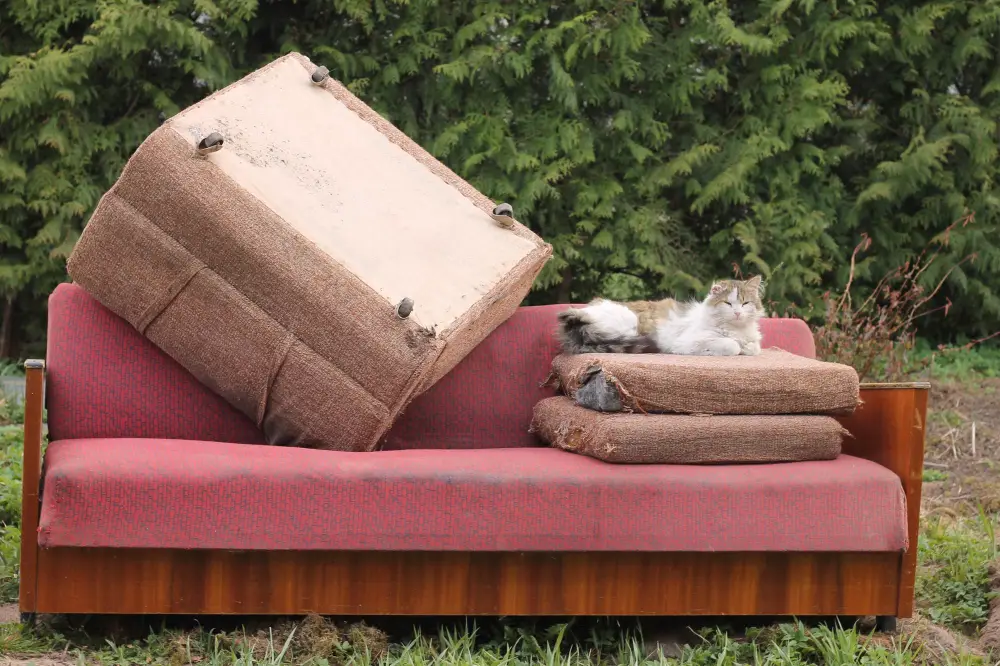
This step is crucial for ensuring a smooth repair process and preventing further damage to your couch.
To begin, use a pair of sharp scissors or a seam ripper to carefully cut away any frayed edges or loose threads around the hole. Be sure not to cut into any surrounding fabric that is still intact.
Next, gently pull back any remaining damaged fabric until you reach an area where it is firmly attached. Use scissors or a seam ripper again if necessary.
If there are multiple layers of fabric involved (such as on upholstered furniture), be sure to remove all layers that have been affected by the hole.
Mend Fabric Holes
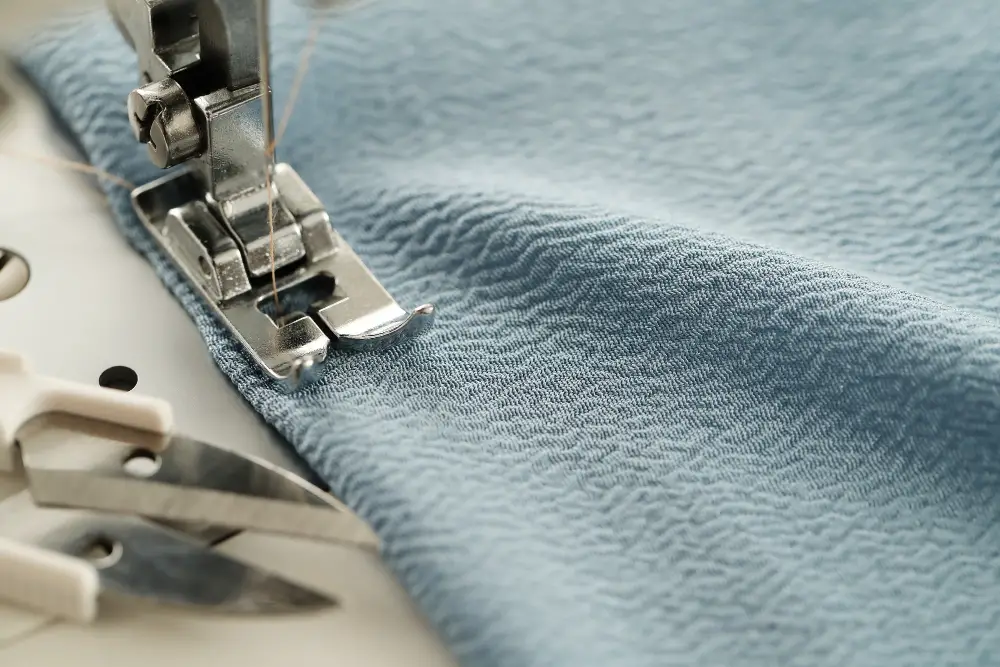
If your couch is made of fabric, you’ll need to use a needle and thread or a sewing machine to repair the hole. Start by threading your needle with matching thread and knotting one end.
Next, carefully sew up the edges of the hole using small stitches that are close together. Be sure not to pull too tightly on your thread as this can cause puckering in your repaired area.
If there are any loose threads around where you’ve sewn, trim them off with scissors so they don’t get caught on anything else later on.
Repair Leather or Vinyl Holes
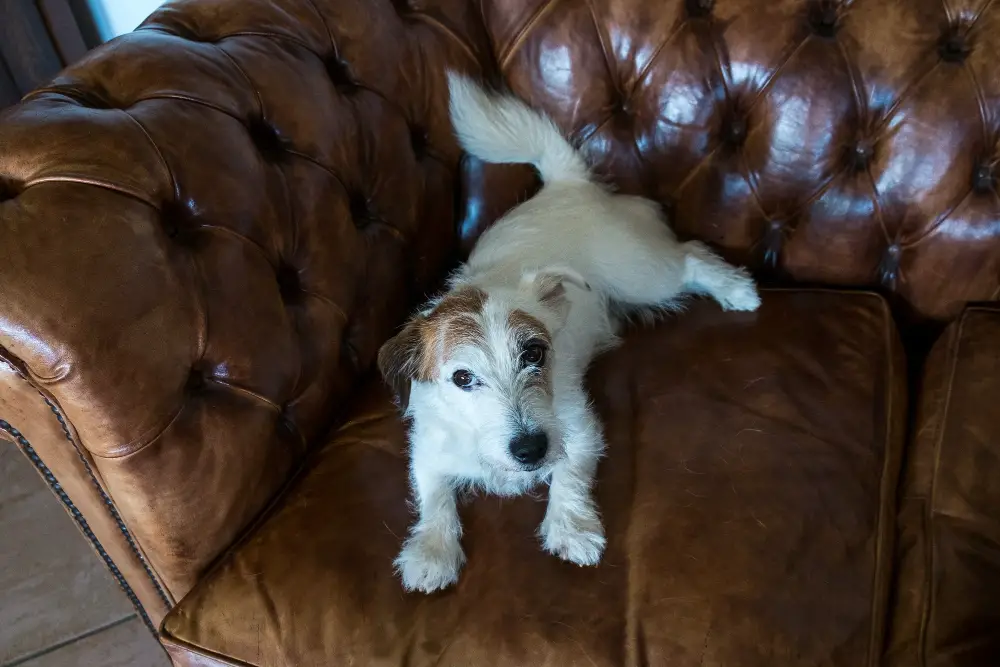
It’s still possible to fix the damage and restore your furniture to its former glory.
To repair holes in leather or vinyl upholstery, you’ll need a few specialized tools and materials. First, clean the area around the hole with rubbing alcohol and allow it to dry completely.
Then use scissors or an X-acto knife to trim any loose threads or frayed edges around the hole.
Next, cut out a patch from an extra piece of matching leather or vinyl that’s slightly larger than the damaged area. Apply adhesive glue on both sides of this patch before placing it over the damaged spot carefully.
Measure and Cut Replacement Fabric

This step is crucial in ensuring that your patch fits perfectly into the hole without any excess material bulging out or leaving gaps. Start by measuring the length and width of the hole using a tape measure, then add an extra inch to each measurement for seam allowance.
Next, lay out your replacement fabric on a flat surface with its right side facing down. Place a piece of paper over it and trace around it using chalk or pencil – this will be your cutting guide.
Cut along these lines carefully with sharp scissors or a rotary cutter.
Remember to double-check all measurements before cutting as mistakes can be costly! Once you have cut out your patch, place it over the hole in position so that there is enough overlap around all edges for sewing purposes.
Secure the Patch
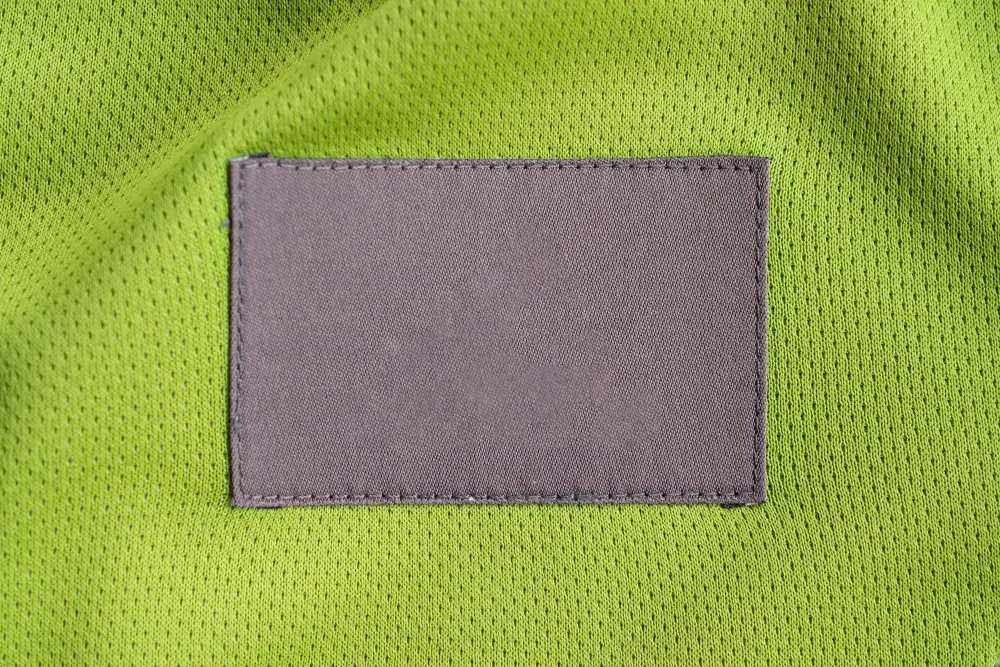
Begin by placing the patch over the hole and ensuring that it covers all edges of the damaged area. Then, use a fabric glue or adhesive spray to attach one side of the patch onto your couch’s upholstery.
Next, carefully lift up one edge of your patch and apply a small amount of fabric glue or adhesive spray underneath before pressing down firmly on top again. Repeat this process for each side until all edges are securely attached.
If you’re using an iron-on patch instead, follow its specific instructions for application as they may vary depending on brand and material type.
Remember not to rush this step – taking your time will ensure that your repair is strong enough to withstand regular wear-and-tear from both human occupants and furry friends alike!
Sew the Edges
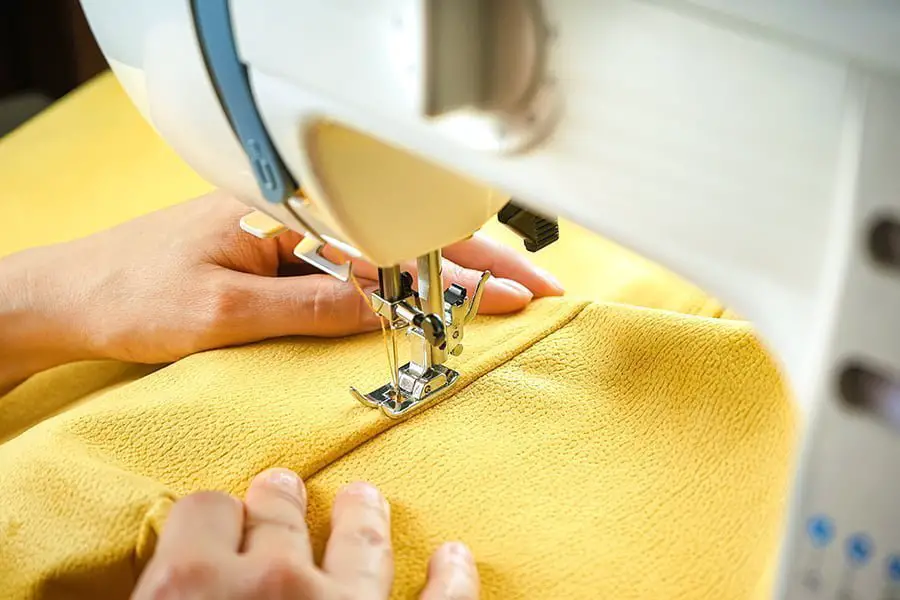
This step is crucial for ensuring that your repair job looks seamless and professional. Start by threading a needle with a strong thread that matches the color of your couch fabric.
Then, tie a knot at one end of the thread.
Next, begin sewing along one edge of the patch using small stitches that are close together. Be sure to pull each stitch tight as you go to ensure a snug fit between the patch and surrounding fabric.
As you work your way around all four sides of the patch, take care not to pull too hard on any one stitch or stretch out any part of your couch fabric in an attempt to make everything line up perfectly – this can cause puckering or other unsightly distortions.
When you’ve finished sewing all four edges, tie off your thread securely and trim away any excess material from both ends with scissors so there are no loose threads hanging around which could be tempting for curious pets!
Sewing Techniques for Couch Repair
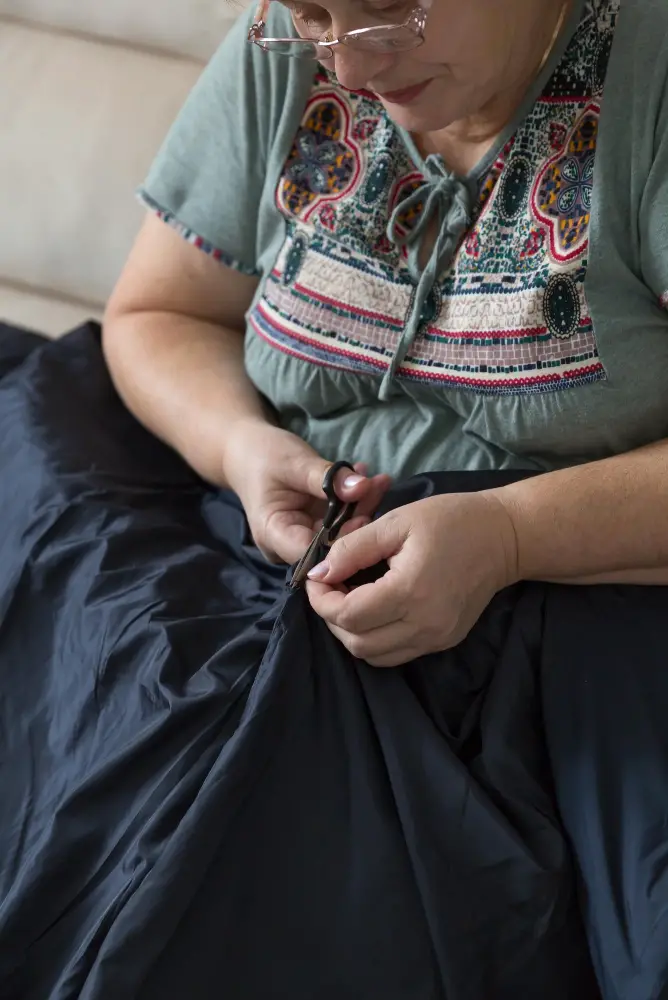
There are a few different techniques you can use depending on the size and location of the hole.
For small holes, a simple whip stitch may be all that’s needed. This involves threading your needle through both sides of the fabric at regular intervals until you’ve closed up the hole completely.
For larger holes or tears, a patch may be required. To create a patch, cut out a piece of replacement fabric that is slightly larger than the damaged area.
Then sew around its edges using either an overcast stitch or zigzag stitch to prevent fraying.
When attaching your patch to your couch cushion or frame, make sure it is securely fastened in place with either upholstery tacks or heavy-duty thread.
Reassemble the Couch
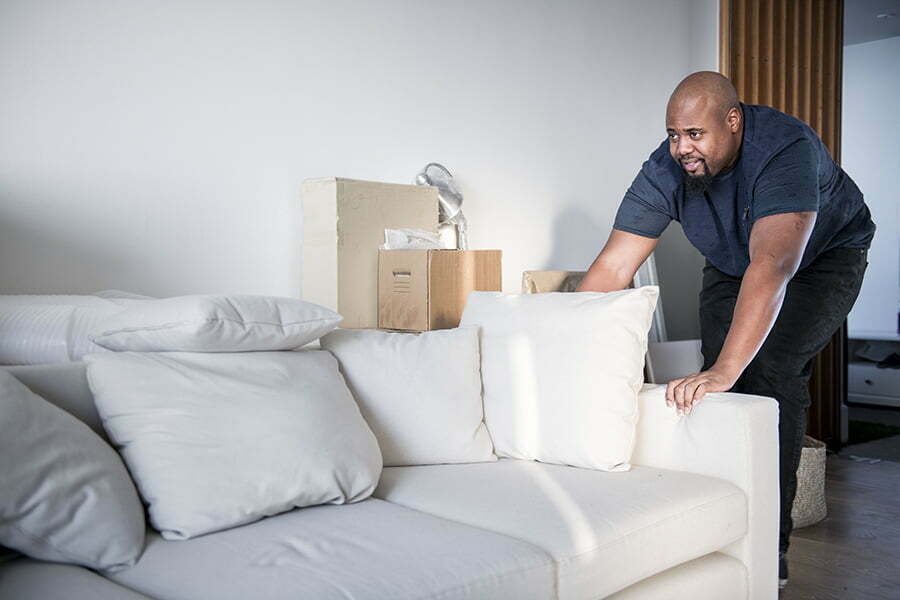
Start by placing the cushion back onto the frame and ensuring that everything lines up correctly. If there are any loose screws or bolts, tighten them up before moving on.
Next, carefully place any fabric or padding back into its original position and secure it with staples or glue as needed. Make sure that all seams are aligned properly so that they blend seamlessly with the rest of your couch.
Take a step back and assess your handiwork. Does everything look even? Are there any noticeable bumps or lumps where you made repairs? If so, go over those areas again until they’re smooth and flush with the rest of your couch.
Blending Repaired Areas With Couch
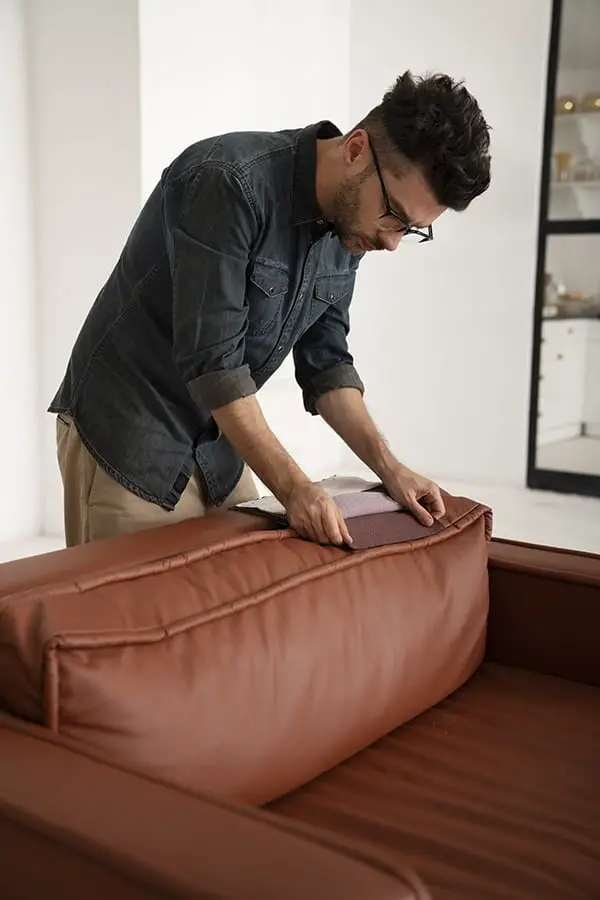
One way to do this is by using a fabric dye or marker that matches the color of your couch. Apply a small amount of dye or marker to a hidden area first, such as under one of the cushions, and let it dry completely before assessing whether it matches well enough.
If you’re unable to find an exact match for your upholstery material, consider adding decorative elements like throw pillows or blankets in complementary colors and patterns. This can help draw attention away from any slight differences between repaired areas and other parts of your couch.
Another option is reupholstering larger sections if necessary so that they match perfectly with newly patched areas. However, this may require professional assistance depending on how extensive repairs are needed.
Prevent Future Damage
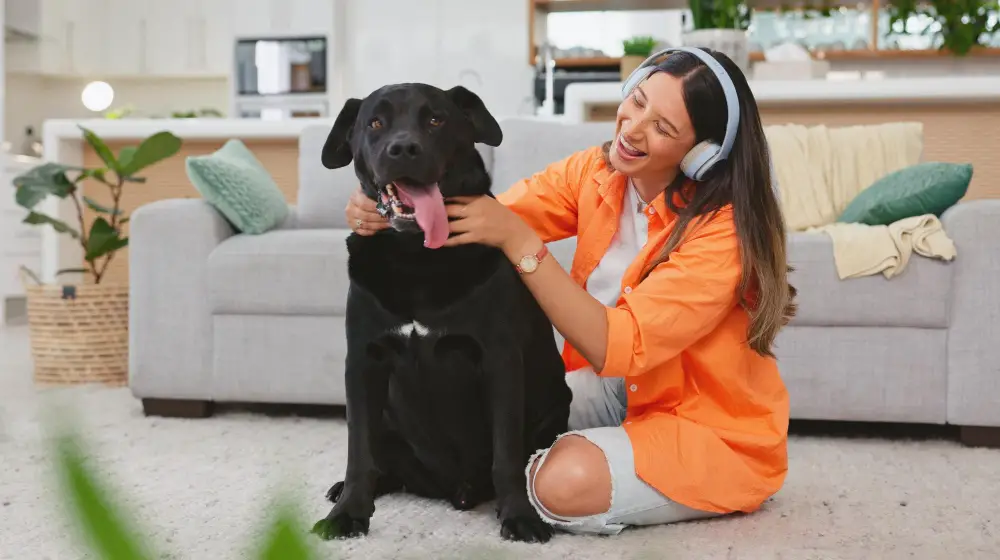
After all, you don’t want to go through this process again anytime soon! One of the best ways to prevent further damage is by training your dog not to jump on or scratch at furniture. Positive reinforcement techniques can be highly effective in teaching dogs what behaviors are acceptable and which ones aren’t.
Another option for preventing future damage is by using protective measures such as couch covers or slipcovers. These can help protect your furniture from scratches, spills, and other types of wear and tear that come with everyday use.
If you have a particularly rambunctious pup who just can’t seem to resist jumping on the couch, consider investing in a durable pet bed instead. This will give them their own cozy spot where they can relax without causing any harm.
Protective Measures to Prevent Future Damage

One of the easiest ways to do this is by using protective measures like slipcovers or furniture covers. These can be especially helpful if you have a particularly rambunctious pup who loves nothing more than jumping on and off the furniture.
Another option is training your dog not to jump on or scratch at the couch. This can be done through positive reinforcement techniques like rewarding good behavior with treats and praise, as well as redirecting their attention when they start getting too rough with the furniture.
If all else fails, consider investing in pet-friendly upholstery materials that are designed specifically for homes with pets. These fabrics are often more durable and resistant to scratches and tears than traditional upholstery materials.
Couch Covers and Slipcovers for Prevention
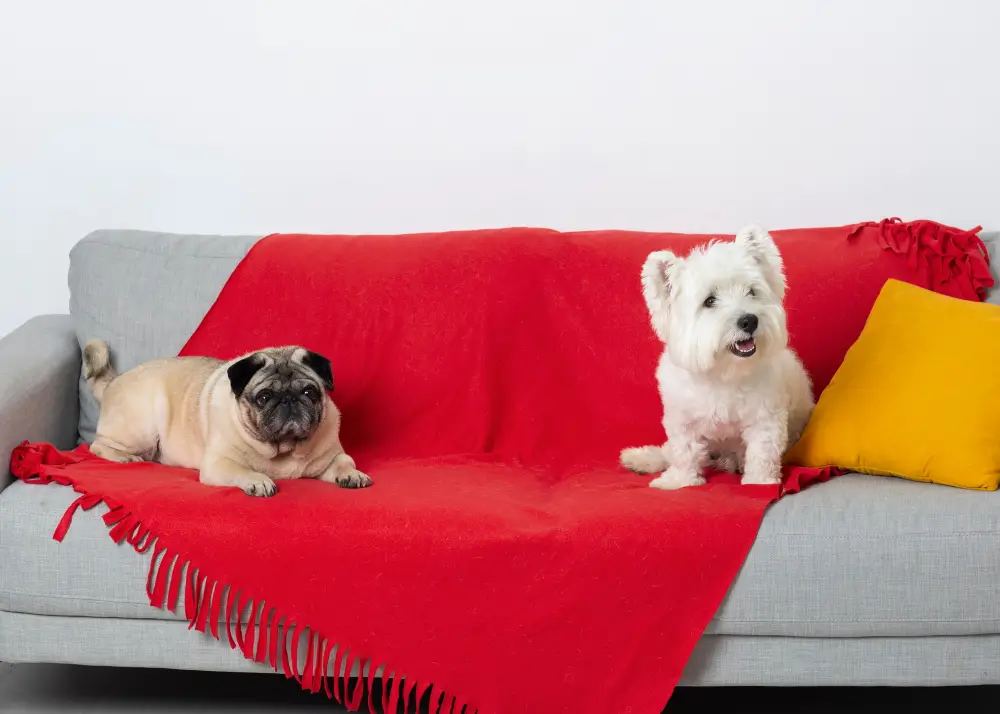
Not only do they protect your couch from scratches, spills, and stains, but they can also add a stylish touch to your living room decor. Slipcovers come in various materials such as cotton or polyester blends that are easy to clean and maintain.
If you have an active dog who loves jumping on the couch or digging into its cushions, consider investing in a durable cover made of heavy-duty fabric like canvas or denim. These fabrics can withstand wear-and-tear better than other materials.
Slipcovers come in different sizes for various types of furniture including sofas, loveseats and chairs so make sure you measure correctly before purchasing one. They’re also available with features like elastic bands that keep them securely fastened onto the furniture without slipping off easily.
Training Your Dog to Avoid Damaging Furniture

While it may seem like a daunting task, with patience and consistency, you can teach your furry friend to respect the boundaries of your home. One effective method is crate training – providing a safe and comfortable space for them when you’re not around.
You can also provide plenty of toys and chew treats to redirect their attention away from the furniture. Another technique is positive reinforcement – rewarding good behavior with praise or treats while ignoring bad behavior.
Consistency is key here; make sure everyone in the household follows these rules consistently so that there’s no confusion for Fido. Remember that dogs are naturally curious creatures who love exploring their surroundings through playfulness, but they also want nothing more than to please their owners! With proper training techniques, patience, and lots of love (and maybe some extra belly rubs), you’ll be able to enjoy snuggles on the couch without worrying about any new holes appearing anytime soon!
When to Call a Professional

A skilled upholsterer can assess the damage and provide an estimate for repairs. They have access to specialized tools and materials that may not be available at your local hardware store.
They can ensure that any repairs are done correctly so that they last as long as possible.
While calling in a pro will likely cost more than doing the job yourself, it’s important to weigh this against potentially causing further damage by attempting something outside of your skillset. If you do decide to go with a professional repair service, make sure you choose someone reputable who has experience working with furniture similar to yours.
While fixing holes caused by pets on couches is often manageable through DIY methods outlined above; sometimes seeking out help from professionals is necessary when dealing with extensive damages or lack of confidence in one’s abilities – ultimately ensuring longevity for both furniture piece & pet-owner relationship!
FAQ
How do you fix a dog chewed couch?
To fix a dog chewed couch, remove hanging pieces, sand the area gently, apply wood glue if needed, tape down splinters, and allow it to dry overnight.
What are the best materials to use for repairing a couch damaged by a dog?
The best materials to use for repairing a couch damaged by a dog include heavy-duty fabric, upholstery repair kits, and extra padding or cushioning.
How can one prevent a dog from chewing on furniture in the future?
To prevent a dog from chewing on furniture in the future, provide chew toys, use deterrent sprays, and consistently train and redirect their behavior.
Is it possible to restore a couch’s original appearance after it has been damaged by a dog?
Yes, it is possible to restore a couch’s original appearance after being damaged by a dog, depending on the extent of the damage and the appropriate repair methods employed.
